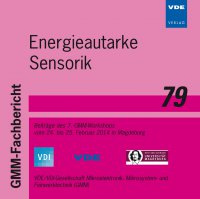Transcutaneous Energy Transmission for Medical Implants
Konferenz: Energieautarke Sensorik - Beiträge des 7. GMM-Workshops
24.02.2014 - 25.02.2014 in Magdeburg, Deutschland
Tagungsband: Energieautarke Sensorik
Seiten: 6Sprache: EnglischTyp: PDF
Persönliche VDE-Mitglieder erhalten auf diesen Artikel 10% Rabatt
Autoren:
Friedmann, Jan (WITTENSTEIN AG, 97999 Igersheim, Germany )
Grödl, Felix; Kennel, Ralph (Department of Electrical Engineering and Information Technology, Institute of Electrical Drive Systems and Power Electronics, 80333 Munich, Germany)
Inhalt:
Surgical implants are undergoing a major transition from being most often purely mechanical systems, to more and more mechatronic, implantable systems. Formerly public funded R&D projects (e.g. DLR Artificial Heart [16, 17]), are entering the commercialization phase. To guarantee a sufficient power supply and an acceptable implant lifespan, inductive transcutaneous energy transmission systems combined with secondary batteries come to the fore. Guiding the development through the requirements, integration, verification and testing phase by the v-Model, a method for the management of high-risk system developments, leads to reduced remaining risks and a higher product quality. The technical capabilities and the significance of a simulation based development process for medical mechatronic systems is shown in this paper. A FEM based EM-Field simulation is embedded into a v-Model based development process. The capabilities of the method to be a tool for the study of design variations, optimization and failure mode analyses are shown.


